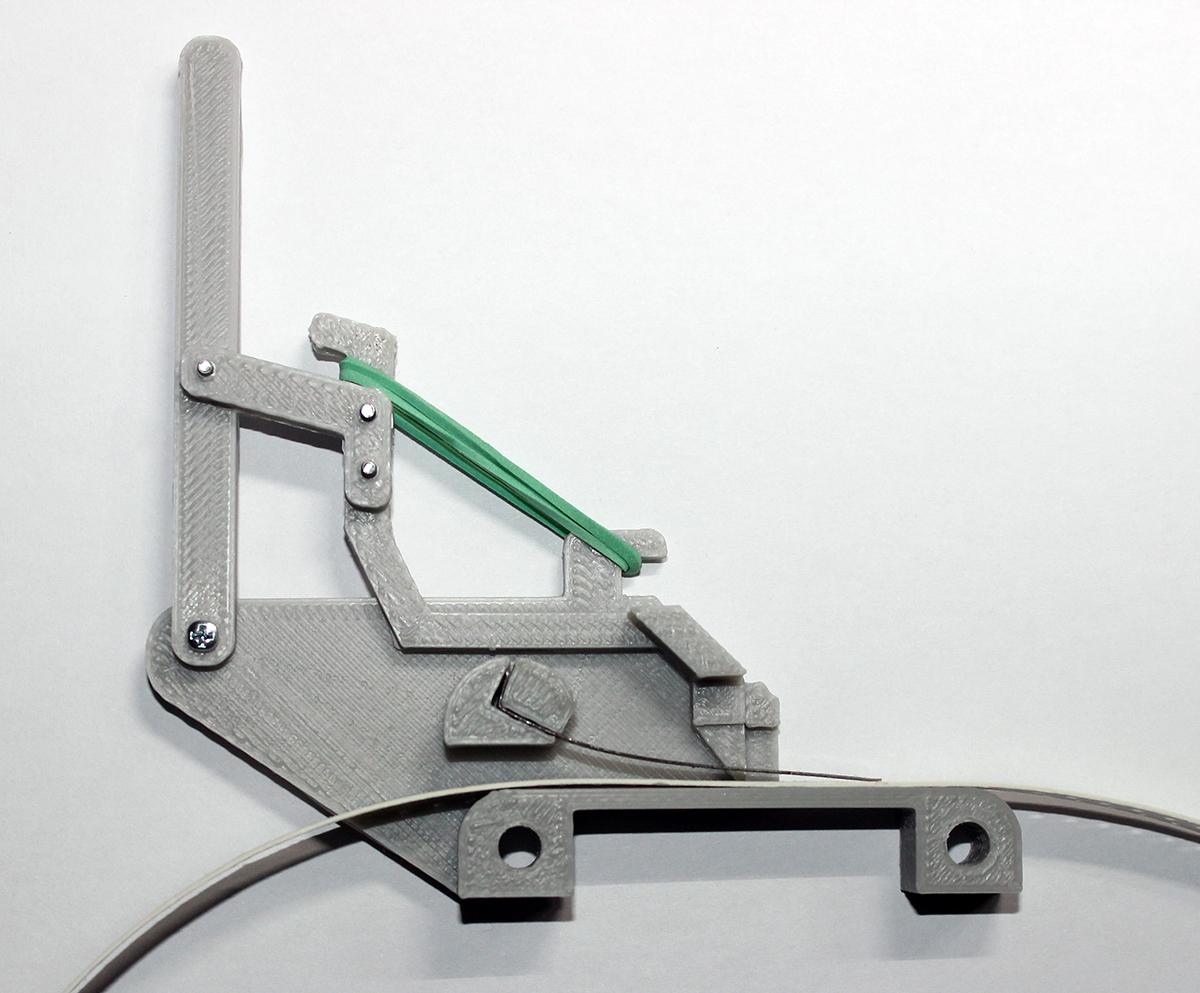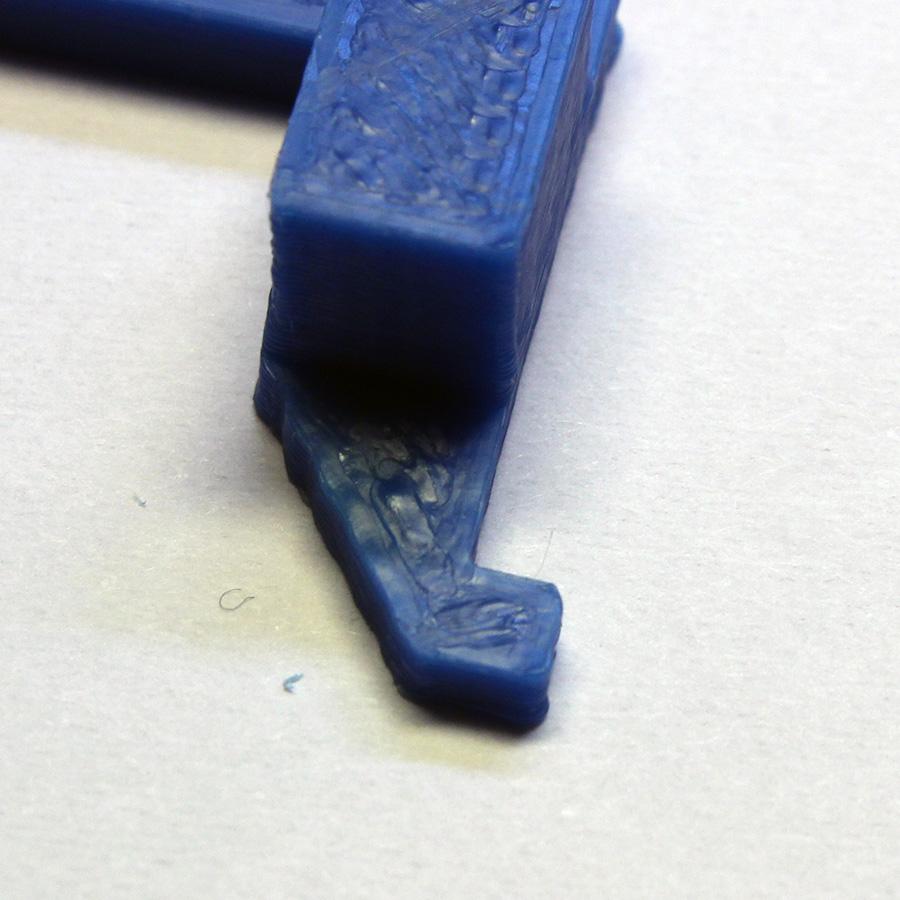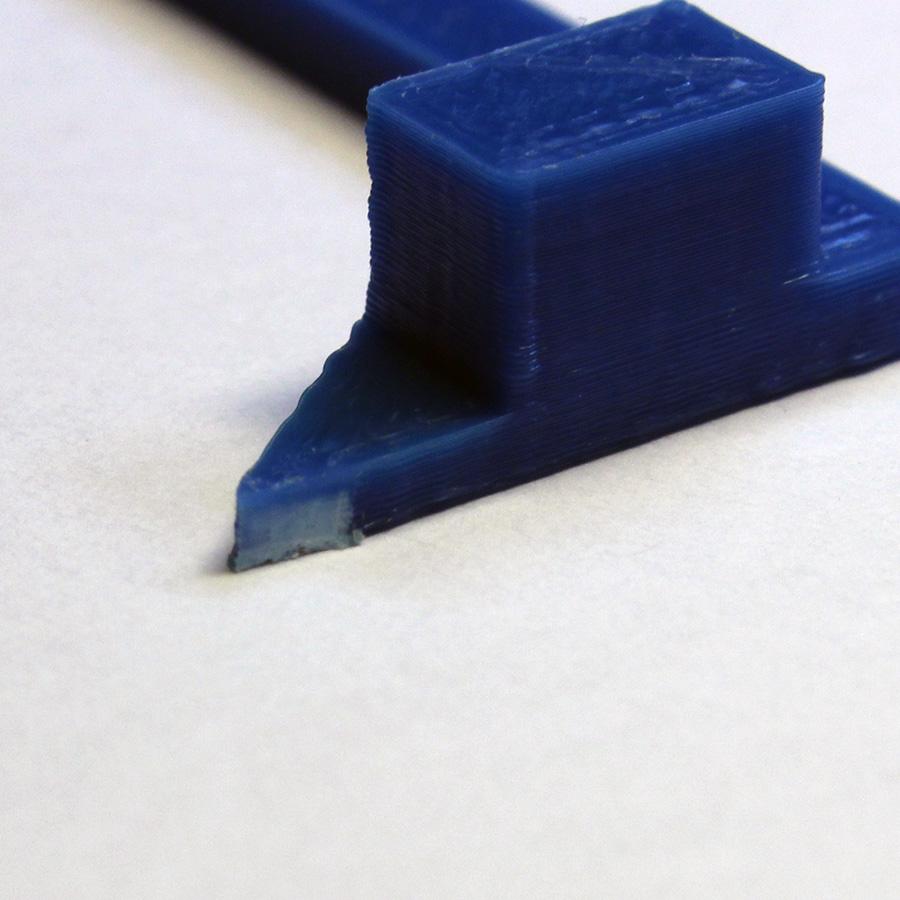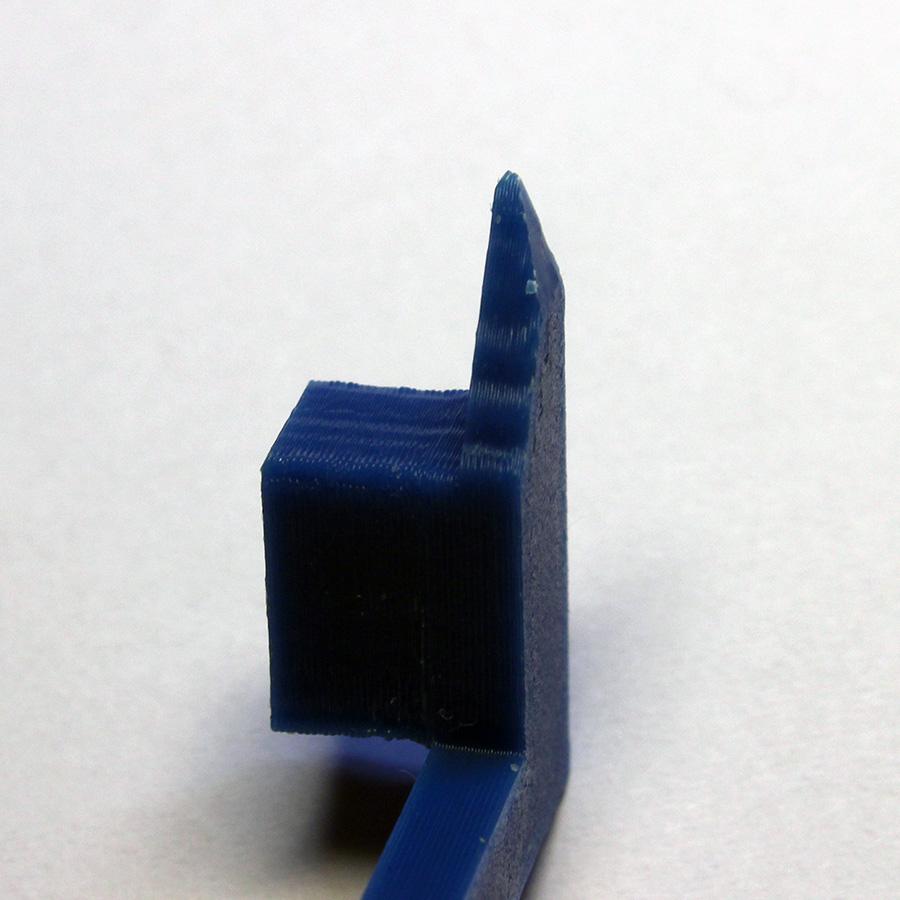This page describes a simple fully 3D printable semi-automatic SMT part feeder for custom Pick and Place machines.
The best way to see how it works is to see a video: https://youtu.be/IDiFrP3rNAg
1)Width=tape width+2mm (actually this is 1mm more than tape reel and gives ~100% space usage efficiency).
2)Fully 3D printable(or milled). Needs a few M2 screws and two springs to assemble.
3)Feeders are easy to stack into any configuration and are easily adaptable to different width.
4)SMT tape thickness up to 5mm, no need to tune.
5)Precision and repeatability does not depend on precision of actuator (head) move. The tape is always moved to one fixed position.
6)Costs about 1-2$ if you have a 3D printer.
1)The design is machine dependeble. You may need to adjust it for your machine sizes, mount, etc.
2)It is not really convinient and fast to change a tape in the feeder and the feeder itself is fixed to machine.
3)Does not support tapes thicker than 4-5mm in current version.
4)Need to be adapted for tapes wider than 16mm.
Flat spring dimension is 51x(tape width - 3)mm. It is 51x5mm for 8mm tape. Actually the length is not really critical and may vary by few mm.
One of the most common spring metal source is paper binder clip. These are made from very elastic steel and one of the standard size is 51mm wide which is perfectly fit for the feeder. They also can be bought absolutely everywhere for very little money.
Printing pull pin on the 3D printer is a bit difficult, so the tip is printed with extra ammount of plastic. It is very easy to cut it by knife after printing to get the right shape. See photos.
The entire assembly consists of feeders themselves, the side cover for the most right feeder and the extrusion holder. To assemble it you will also need the two M5 threaded rods and nuts. The entire assembly is fastened to the extrusion profile 2040 with T-nuts an screws.
There are few possibilities for film pulling.
-
Film pulling system may be replaced just by some kind of weight pulling the film down.
-
The film is pulled by a reel. All the reels are on one rotating axis. This axis rotates when each feed operation occurs, no matter of which feeder. So for every feeder except active one the reels will just slip on the axis. On the active feeder the reel will rotate pulling protective film off the smt tape, because friction force is higher that film peel off force.
The whole assembly of reels and feeders:
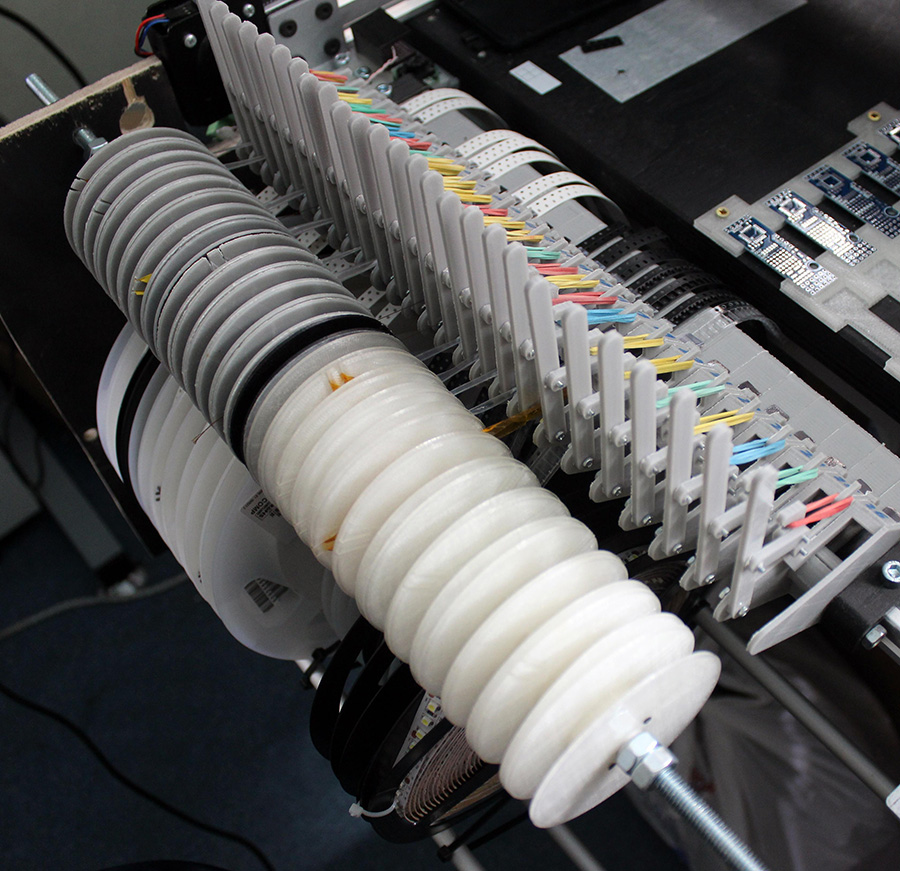
Each reel consists of two parts 3D printed parts with one flat spring (similar to the one used in feeder). The axis diameter is 10mm.
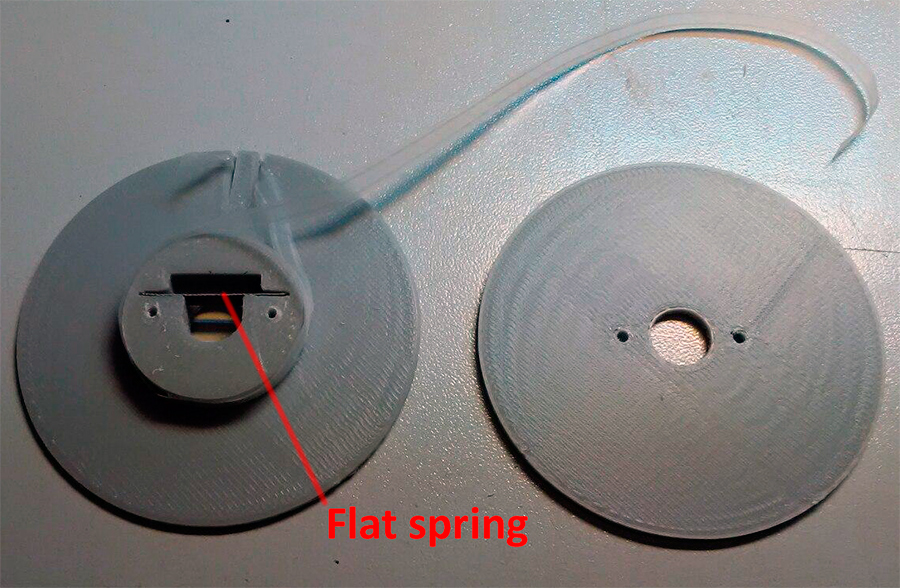
The axis is rotated by NEMA17 motor using GT2 belt and pulleys which increase torque by about 4 times. The torque needed to rotate the axis with all the reels installed is quite high.
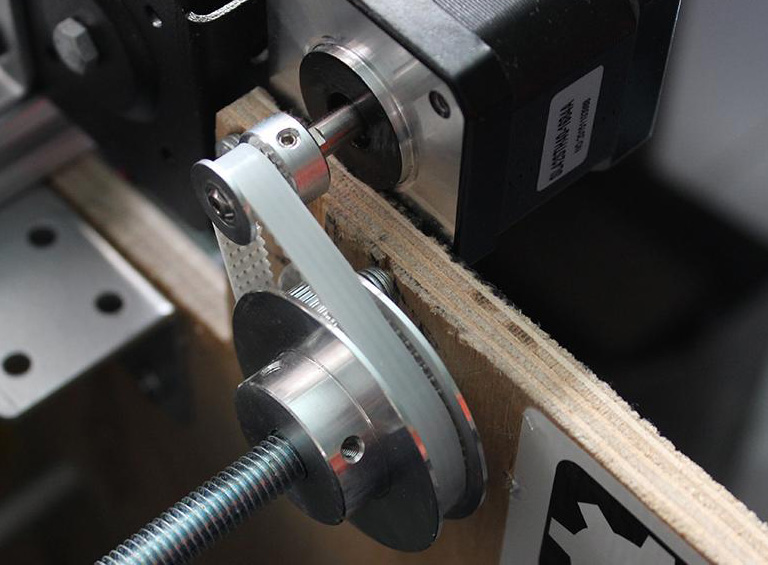
This was never done for real working setup, but the concept was checked on an early version of this feeder. The pulling force is generated by a cheap and small RC servo motor. Please see video: https://www.youtube.com/watch?v=BvcR2atKbBQ
Currently you can find them in alex_feeder_1.0.zip archive.
For each feeder you'll need this four files:
-Xmm_body - the main body of the feeder for X width SMT tape
-Xmm_tip - the tip that pushes the tape for X width SMT tape
-arm - vertical arm that is being pushed by machine head, same for any tape width
-tip_connector - a small piece to connect arm and tip, same for any tape width
You'll also probably need:
-side_cap - a flat side cover for the most right feeder
-extrusion_holder - a clamp for attaching the whole feeder assembly to 2040 or 4040 extrusion by M5 screws. At least two pieces, one at each side of feeder assembly.
For each reel you'll need this two files:
-Xmm_reel - the main body of the reel for X width SMT tape
-reel_cap - second flat side of the reel, same for any tape width
DWG files contain all sources. Please dont't blame me for the quality of the sources and for using DWG for 3D modeling :)
The main idea of this feeder is taken out of the SMD-Taxi machine (see video: https://www.youtube.com/watch?v=BfcFKsf5NEs and some more photos here: http://www.smd-taxi.ru/features ).
This small project could never be done without OpenPNP project and community http://openpnp.org
Feel free to email me alex [at] sai dot msu dot ru
You may also find some more information about this feeder in topic on openpnpn goole groops: https://groups.google.com/forum/#!topic/openpnp/B90C2JUtN30%5B1-25%5D
